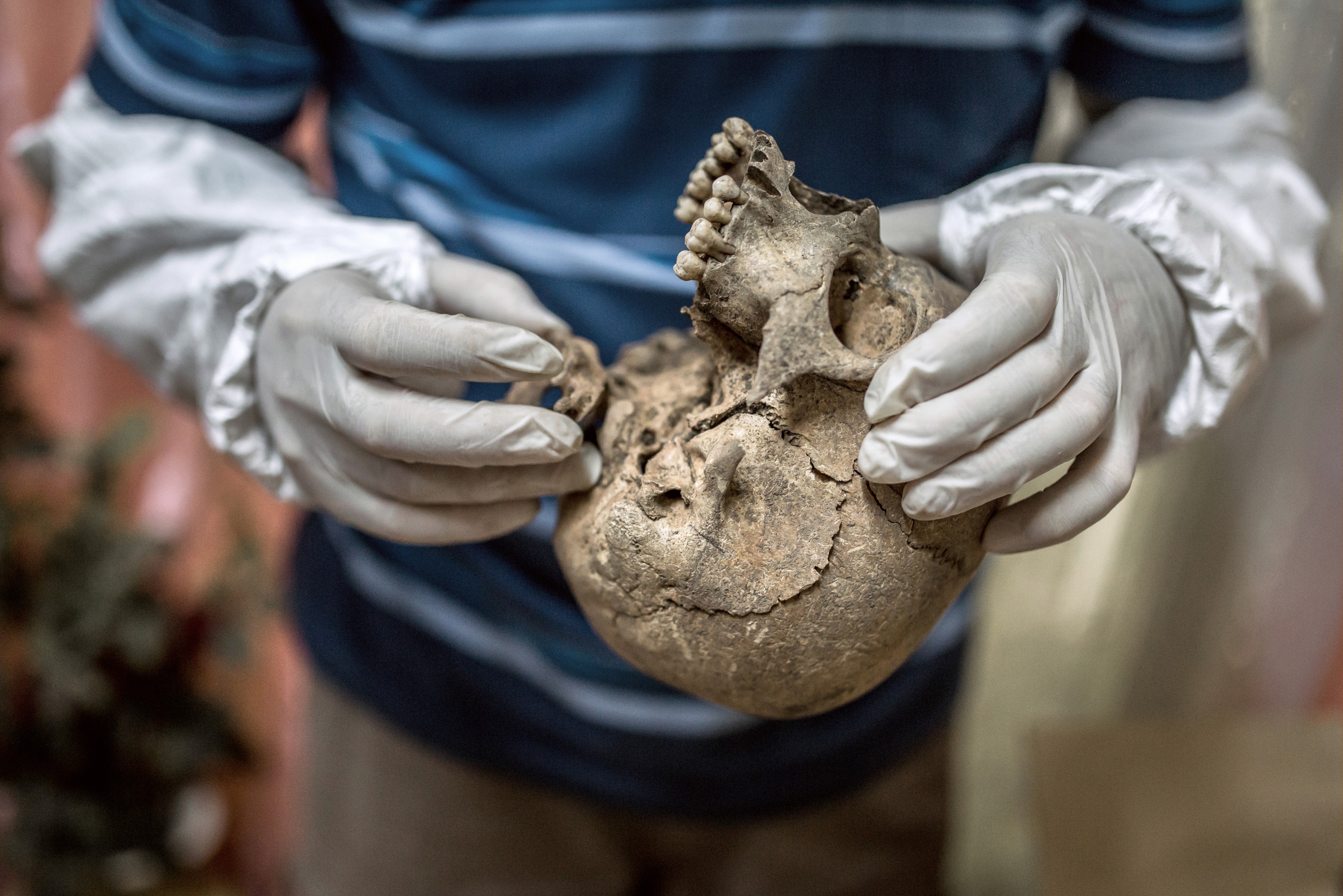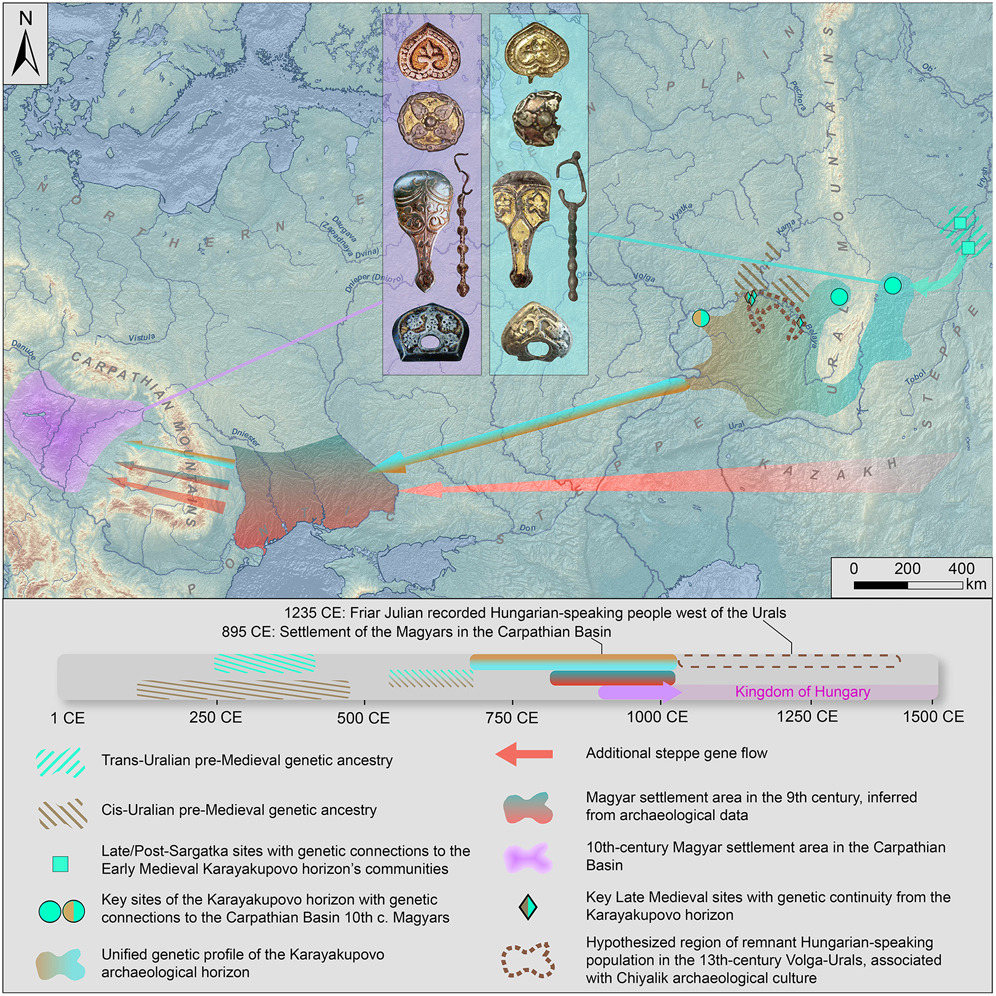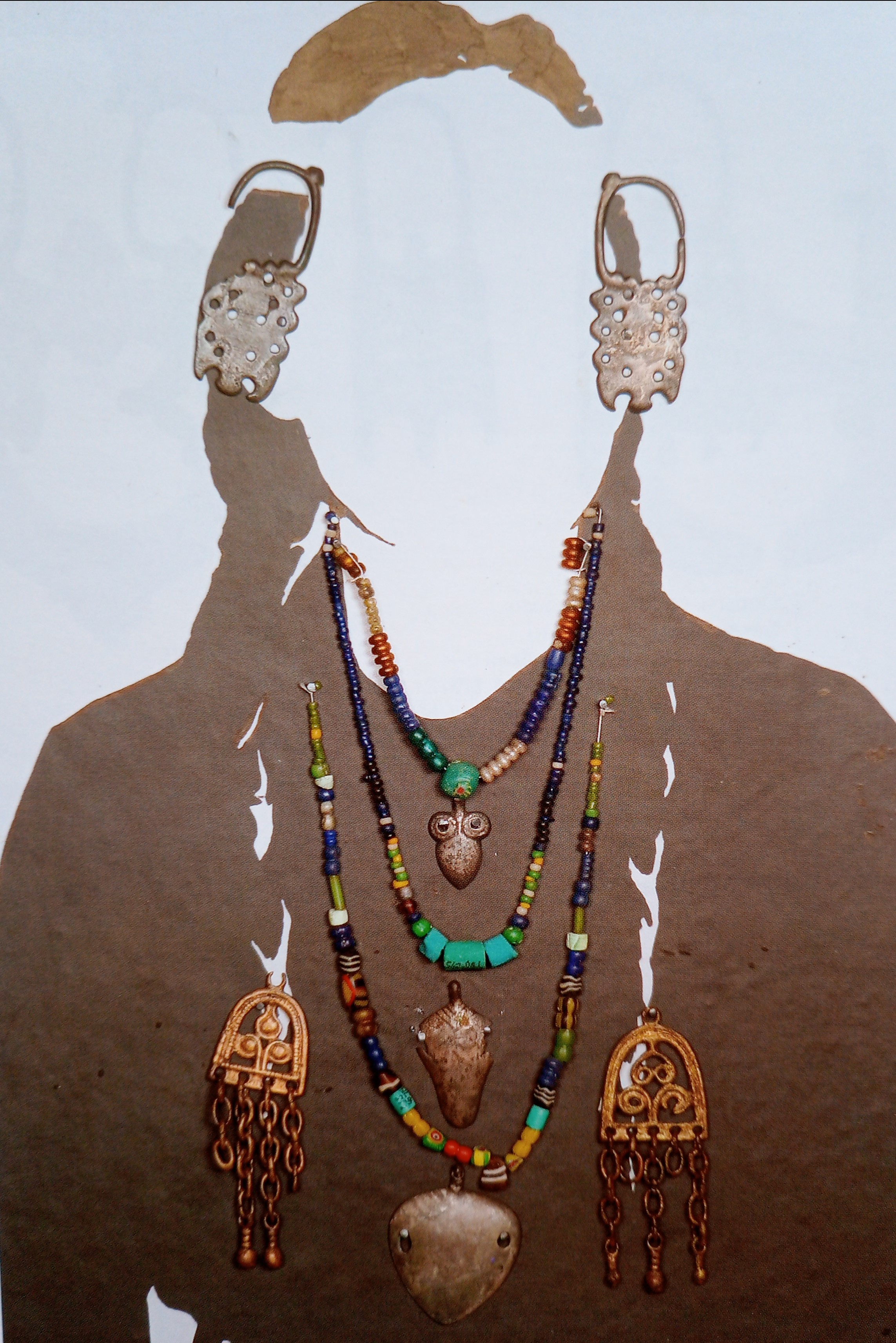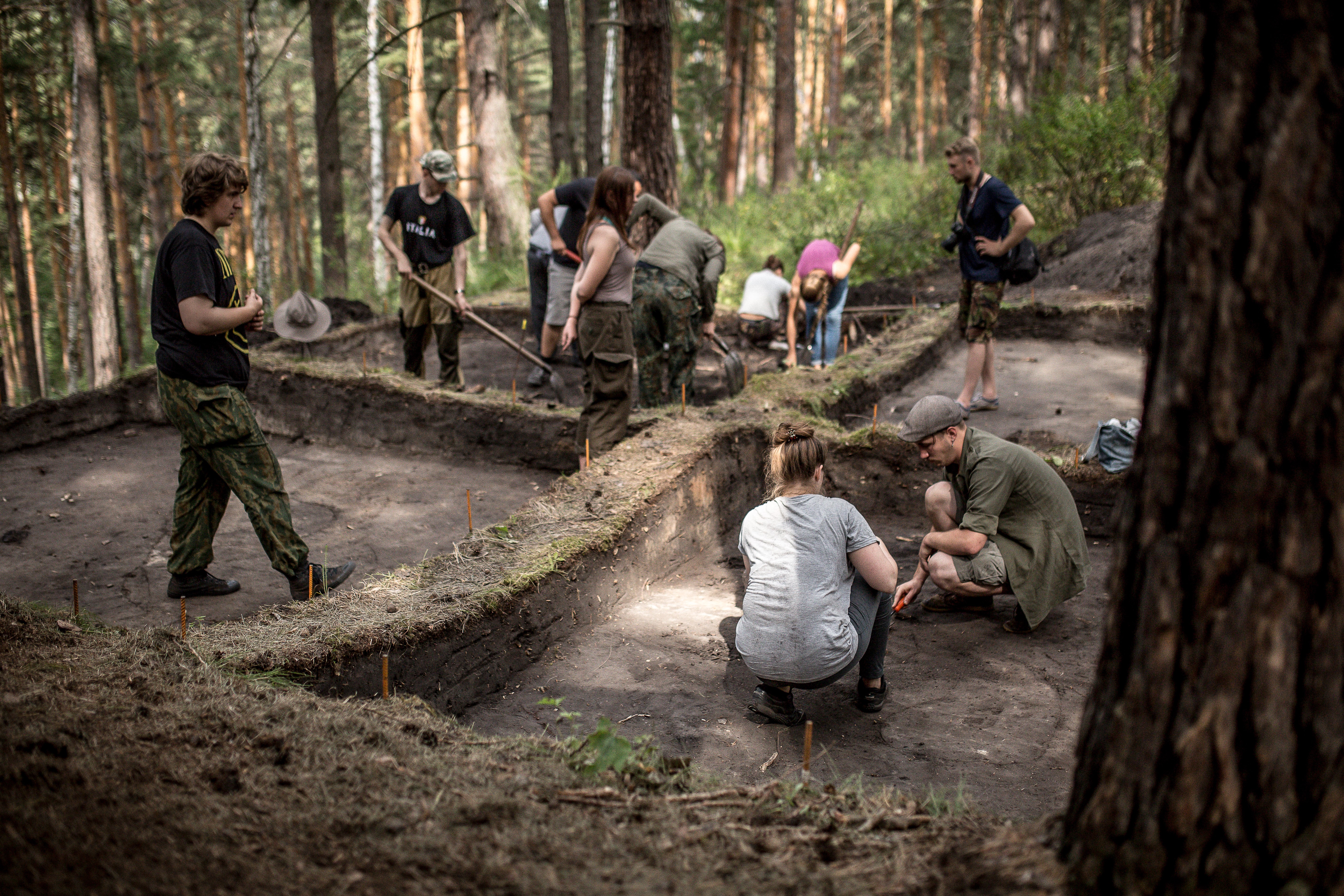A landmark study has recently been published in the prestigious journal Cell. In an international collaboration, the Institute of Archaeogenomics at the ELTE Research Centre for the Humanities (RCH IAG) analysed 120 ancient genomes (complete sets of human genetic information) from the region between Western Siberia and the Volga River. This area had not been previously explored genetically; at the same time, it is of great historical, linguistic, and archaeological importance for understanding the origins and early history of the Hungarians. The study focused on the genetic connections of communities living in and around the Southern Ural Mountains. Using groundbreaking genetic data from the Late Iron Age and Early Middle Ages (300–1000 CE), the researchers identified one of the most significant genetic sources of the Hungarians (Magyars) newly settled in the Carpathian Basin, alongside evidence of continuity in some Uralian populations.
Research Questions
The archaeogenomic research began with several key questions. Its primary goal was to uncover the nature of the relationship between the populations living between the Volga and the Ural Mountains and those inhabiting the Carpathian Basin during the 10th century. It also aimed to model the deeper genetic history of groups closely linked to the population of the Carpathian Basin. The study also had the objective of examining the level of genetic continuity in the broader Ural region from the Iron Age to the Middle Ages and determining whether any descendants of the populations associated with the 10th-century Magyars remained in the Volga–Kama region.
 On-site anthropological examination and genetic sampling by Balázs G. Mende (Tyumen State University (Ru)). Photograph by Mátyás Szöllősi
On-site anthropological examination and genetic sampling by Balázs G. Mende (Tyumen State University (Ru)). Photograph by Mátyás Szöllősi
Uralian Unity
The research group found genetic continuity between Iron Age groups living in the western and eastern foothills of the Urals and individuals belonging to the early medieval Karayakupovo archaeological culture. This 8th–10th-century culture around the Urals has the strongest cultural ties to the Magyars who settled in the Carpathian Basin. The study identified the primary genetic source of the Karayakupovo groups as the late or post-Sargatka culture groups along the middle Irtysh and Tobol rivers in Western Siberia (3rd–5th century CE). Their genetic heritage played a defining role in the gene pool of the Karayakupovo population as well as in the genetic makeup of several 10th century Magyars in the Carpathian Basin. These examinations thus enabled the researchers to trace the genetic history of a portion of the Magyars back to Western Siberia, as far as the first centuries of the Common Era. According to the researchers, the Karayakupovo-type genetic makeup which is detectable on the eastern side of the Urals from this period onward, later appeared on the western side as well, confirmed after 550 CE. Genetics indicate a unified population connected across both sides of the Urals, suggesting that by the end of the 6th century, part of the ancestors of early Magyars had settled on both sides of the mountain range.
A Network of Distant Relations
The study also applied a new method that builds relationship networks between individuals (their genomes) based on shared chromosomal segments. These networks effectively reflect the population structures of different eras and regions, making them suitable for identifying biologically closely related groups and descent communities. Network analysis of over 1,000 ancient samples revealed that 116 early medieval individuals from the Volga-Ural region and the Carpathian Basin formed a common group, indicating a large population connected by distant biological relatedness ties. Notably, the researchers found a significant number of matching chromosomal segments of considerable length between the 10th-century Carpathian Basin Hungarians and the Karayakupovo population, despite the sampled burial sites being located as much as roughly 3,000 kilometers apart. Among the Carpathian Basin sites, the western Hungarian site of Szakony-Kavicsbánya showed the strongest Uralian connections. The connection between the settled Magyars at Szakony and individuals from the Uralian Karayakupovo culture was confirmed by multiple types of analysis.
 Graphical abstract illustrating the main findings of the study by Gyuris, Vyazov, et al. in the context of archaeological and historical data.
Graphical abstract illustrating the main findings of the study by Gyuris, Vyazov, et al. in the context of archaeological and historical data.
Different Genetic Components Pointing to the East
By examining hundreds of thousands of genomic positions, researchers modeled the examined genomes using eight potential ancient genetic sources. One of these possible ancestral components traces back to prehistoric populations from present-day Yakutia. This element occurs mainly in the genetic pool of forest-steppe populations and can be considered as a characteristic genetic marker of Uralic-speaking peoples (Zeng et al., 2025 in Nature). Another component originates from prehistoric populations around Lake Baikal, which spread from that region widely across Northeastern Eurasia.
The results reveal a duality: within the Uralian-affiliated network of newly settled Magyars in the Carpathian Basin, the genetic threads originating from both Yakutia and the Baikal region can be distinguished. Individuals with the strongest distant ties to the southern Ural region predominantly carried the Yakutian component, while groups originating from other eastern regions established connections with them through marriage and procreation.
Those Who Stayed in the East
According to Russian archaeological research, the legacy of the early Magyars – whom Friar Julian discovered – should be sought in Chiyalik-type cemeteries (10th–15th centuries) west of the Urals. This study confirms biological continuity between early medieval Karayakupovo groups and the late medieval Chiyalik culture population along the lower Kama River. The genetic ties between the population of these two groups and the 10th-century Magyars suggest that the Chiyalik people are likely descendants of early Magyars who remained in the East. Radiocarbon dating associated with the study confirms that the descendants were still present in the region during the 14th century, surviving the Mongol invasion. By the 15th–16th centuries, the descendants of the early Magyars who remained in the East had likely become fully assimilated into a multilingual and culturally new environment.
The Migration
Overall, it can be concluded that the Karayakupovo population was one of the key sources of the Magyars settling in the Carpathian Basin. Contrary to a previous study (Maróti et al., 2022 in Curr. Biology), this research found no evidence of genetic admixture with the Asian or European Huns in the Ural region during the 4th-5th centuries; instead, local genetic continuity was the determining factor in the Karayakupovo archaeological horizon. The strong genetic links and the presence of distinct Uralian genetic types among the settled Magyars indicate the rapid nature of the migration from the Volga-Ural region to the Carpathian Basin. Other Central or East Asian genetic components most likely appeared in the chiefdom during the short settlement period in the North Pontic region (Etelköz). This intermediary stage may have been the place for integration and alliance-building with other tribes.
 Reconstruction of a female garment from the Bekeshevo, kurgan I. site of the Karayakupovo archaeological horizon. Niyaz A. Mazhitov's excavation, 1973. Photograph by Attila Türk at the exhibition of the Museum of Archaeology and Ethnography, Ufa (Ru)
Reconstruction of a female garment from the Bekeshevo, kurgan I. site of the Karayakupovo archaeological horizon. Niyaz A. Mazhitov's excavation, 1973. Photograph by Attila Türk at the exhibition of the Museum of Archaeology and Ethnography, Ufa (Ru)
Genetics and Languages
In some cases, genetic relationship networks may also reflect linguistic communities. Within the mixed-origin 10th-century Hungarian (Magyar) population, those belonging to the newly identified Uralian genetic network were likely the carriers of the Hungarian language. While genetics alone cannot prove language use, the current evidence makes this the most plausible hypothesis. Data available so far suggest that the Uralian genetic component first appeared in the Carpathian Basin in the second half of the 9th century, and that the newly settled Magyars showed minimal genetic contact with the Eastern Avars.
The Population of the 10th-Century Carpathian Basin
New groups in the Carpathian Basin, identified as early Magyars based on archaeological evidence, were not genetically homogenous. Some showed clear Uralian parallels, such as individuals from the Szakony-Kavicsbánya site, but other steppe and East European elements were also present. This suggests that multiple groups of varied origins joined them during the migration. It is important to note that the 10th-century Magyars did not arrive in an uninhabited land, but in a region with a rich historical background. The population of the Carpathian Basin in the early 10th century was also diverse, though the majority carried European genetic traits. The East Eurasian component introduced by the Avars was, by then, detectable only in traces. The settling Magyars brought new genetic characteristics to the region, and their admixture with the local population began soon after their arrival.
Framework of the Collaboration
Most of the samples were collected through Russian expeditions and professional collaborations of the Institute of Archaeology at Pázmány Péter Catholic University (PPKE IA) and the Early Hungarians Research Team (EHR) at ELTE RCH . The use of the 40 studied cemeteries in the Volga–Ural region can be dated between the Late Bronze Age (~1900–1300 BCE) and the Late Middle Ages (~1400 CE). The researchers also included 11 new 10th-century DNA samples from the Carpathian Basin, analyzed alongside over 100 previously published genomes from the Hungarian Conquest period. Lab work was carried out in Budapest, Vienna, Ostrava, and Boston. Analyses were led by Balázs Gyuris (ELTE RCH IAG) in Budapest. The Russian archaeological material was evaluated by archaeologists Leonid Vyazov (University of Ostrava) and Attila Türk (PPKE IA, ELTE RCH EHR). The research was supervised by Anna Szécsényi-Nagy (ELTE RCH IAG) on the Hungarian side, and David Reich (Harvard Medical School) on the American side.
 Archaeological excavation in southwestern Siberia as part of a joint archaeological expedition by Tyumen State University and PPCU+EHRT. Photograph by Mátyás Szöllősi
Archaeological excavation in southwestern Siberia as part of a joint archaeological expedition by Tyumen State University and PPCU+EHRT. Photograph by Mátyás Szöllősi
Future Research Directions
The research team plans to further explore the social structure of the conquest-era population using genetic tools. Within the NKFIH Starting Program, Veronika Csáky is leading analyses of complete cemeteries and an exploration of kinship relationships. The investigation into eastern origins will continue by studying the 3rd-10th-century populations of the Tobol and Irtysh regions and by genetically characterizing the Etelköz phase of the migration route. Another key task is to delve deeper into the origins of the previously unexplored steppe-related genetic components that likely entered the population through groups that joined in Etelköz, such as the Kabars.
📩 More information:
A related study and its summary.
Press publications:
Budapest Business Journal: Genetic Research Shows Uralian Origins of 10th Century Hungarians


